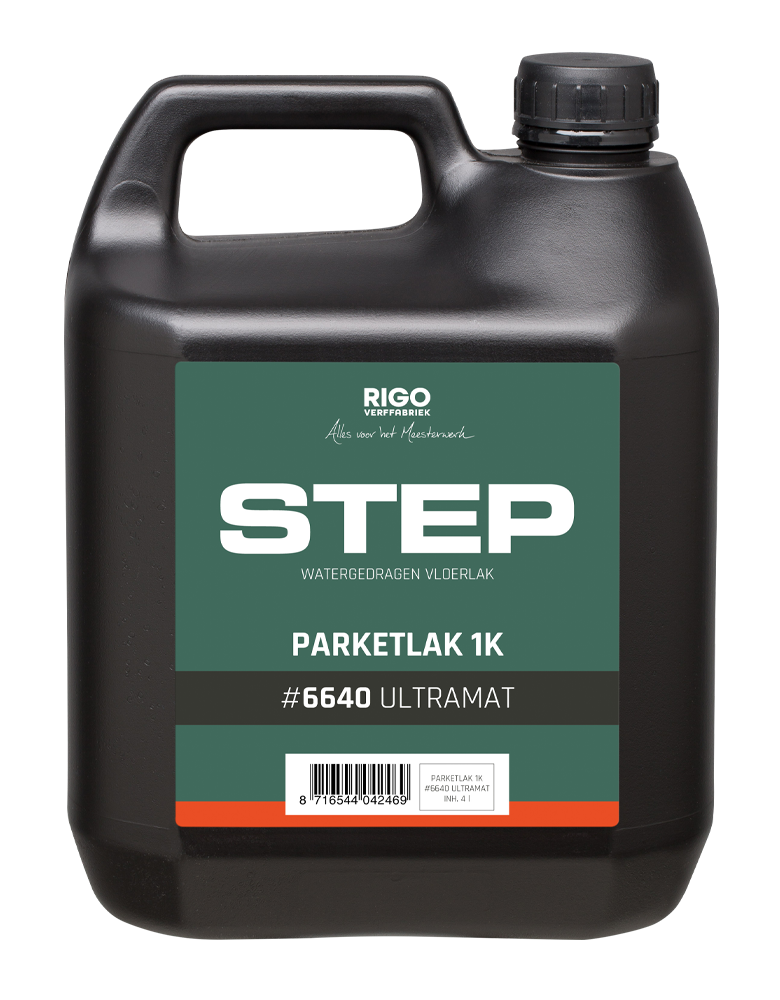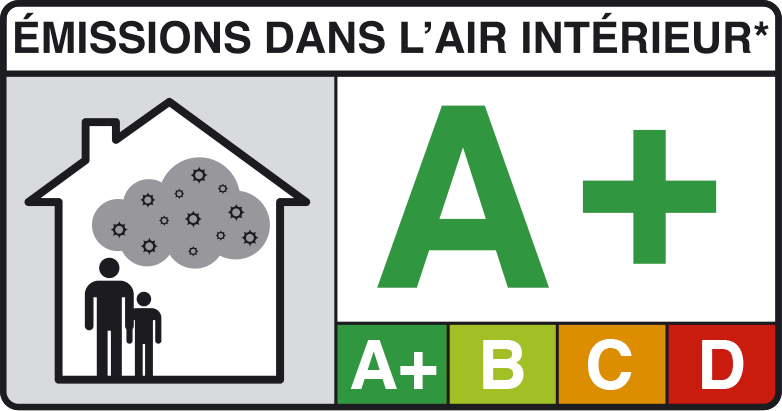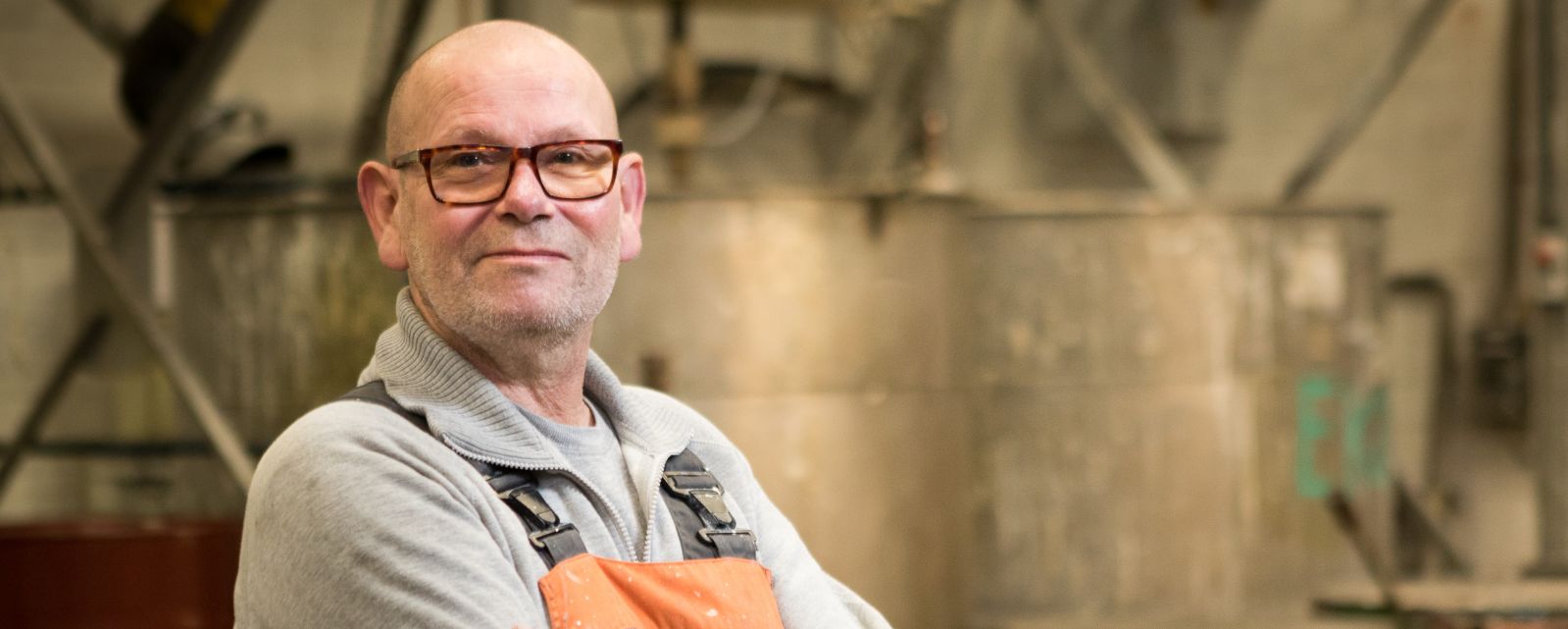Tips from Han
Technical consultant Han will tell you the best way to lacquer with SKYLT. The tips in this video also apply to STEP 1K Ultramatte. Apart from the fact that you don't need to add hardener, of course.
Call rigo verffabriek
+31 255 54 84 48 OR Mail


While lacquering floors truly is a craft, we don't want to make it any more difficult than it has to be. That's why we developed the STEP Parquet Lacquers for parquet installers. To top it all off, STEP-finished floors are surprisingly easy to maintain.


Call +31 255 54 84 48
or mail or download our brochures
| Item no. | Product | Content | EAN | Packed in |
|---|---|---|---|---|
| 5529453 | STEP Parquet Lacquer 1K Ultra-Matte #6640 | 1,00 lt | 8716544042520 | bottle |
| 5529459 | STEP Parquet Lacquer 1K Ultra-Matte #6640 | 4,00 lt | 8716544042469 | jerrycan |
| Item no. | Product | Content | EAN | Packed in |
|---|---|---|---|---|
| 5545733 | STEP Parquet Lacquer 1K Matte #6650 | 1,00 lt | 8716544043220 | bottle |
| 5545739 | STEP Parquet Lacquer 1K Matte #6650 | 4,00 lt | 8716544042612 | jerrycan |
| Item no. | Product | Content | EAN | Packed in |
|---|---|---|---|---|
| 5545833 | STEP Parquet Lacquer 1K Satin #6660 | 1,00 lt | 8716544043268 | bottle |
| 5545839 | STEP Parquet Lacquer 1K Satin #6660 | 4,00 lt | 8716544043275 | jerrycan |
Yes, it is possible. Consider for example the SKYLT Recoatable Oil. If you do not want an invisible, ultra-matt finish, you can apply STEP Parquet Lacquer 2K #6550 Matte, #6560 Satin or #6540 Gloss as the final coat of lacquer. Follow the system composition in the Technical Data Sheet.
Wait to assess until the top coat of lacquer has completely dried. Assess the irregularities both from a distance of several meters from a low viewing angle and directly above, right in front of your feet. Are the irregularities visible from a low viewing angle, but not directly from above? Then it concerns differences in gloss level and/or layer thickness, These can be solved by sanding the floor in between and lacquering it again. Avoid repetition by paying extra attention to applying the lacquer evenly and rolling overlaps thoroughly wet-on-wet. The best way to distribute evenly is to apply the lacquer in blocks. Apply an equal amount of lacquer per block and distribute it crosswise within that block. Then roll wet-on-wet. Do this without pressure on the roller with the longest possible lacquer stick. Make sure that you do not push any visible difference in layer thickness in front of the roller when rolling it again. If necessary, roll out too much lacquer over a larger area first.
Are the irregularities visible from above as a colour difference and has a subsequent layer of lacquer not removed them? Then it is unfortunately necessary to sand the surface completely or partially bare again and to rebuild the lacquer system. Then proceed as described in the above question about 'applying'.
You can polish the floor and apply a new coat of lacquer with the desired finish.
Yes, use 120p grit sandpaper before the final coat.
If the floor is cleaned with normal soap or a multi-purpose detergent, residues may be left behind on the floor. These residues may cause a glossy effect. We recommend cleaning the floor with STEP Mild Cleaner.
The 1K lacquers from the STEP range offer excellent and sufficient protection for regular and intensive use. In a private home, a common recommendation is to use a 1K lacquer on the top floor and to choose a 2K finish in the living room, kitchen and hall.
The 1K lacquers are also extra easy to use. They have a shorter drying time and do not need to be mixed. This makes it possible to apply 3 coats of lacquer in one day and everything left over can be used for the next coat or the next project. And that is quickly earned!
Choose a 2K finish for commercial or project applications and in places where high moisture load and high wear load will coincide. Typical examples are behind the bar or the busy entrance of a hotel. For furniture and interior work, a 2K finish is chosen in places where optimum hand fat resistance is desired. For example, kitchen fronts and stair railings.
As a general guideline, we recommend not to apply a 1K finish on top of a 2K coat. If you do choose to do this, then at least sand well with P120 before the 1K coat.
When lacquering over an unknown existing coat of lacquer, a 2K lacquer will generally provide a better adhesion. Consider using STEP Renovation Lacquer 2K #6250.
Covering a freshly lacquered floor always involves risks, although these are less when using a breathable quality. Our advice is to first carefully consider whether the work sequence can be adjusted, so that covering can be omitted. If there is really no other option, we advise the professional to first deliver the floor and only then have it covered. Never use tape to secure the covering material to the fresh lacquer coat.
Back to overview
Technical consultant Han will tell you the best way to lacquer with SKYLT. The tips in this video also apply to STEP 1K Ultramatte. Apart from the fact that you don't need to add hardener, of course.

